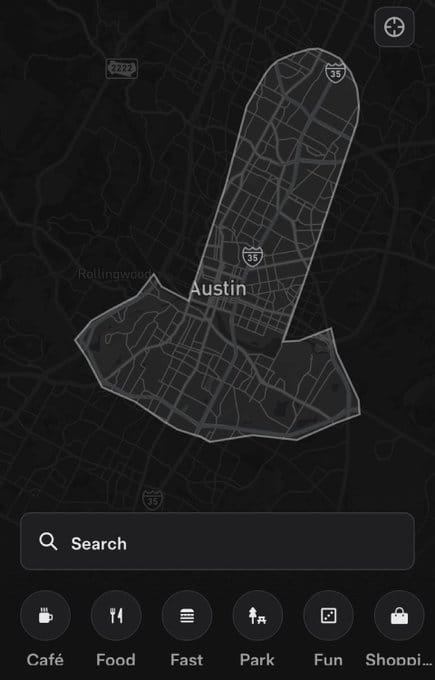The Double-Edged Future: Privacy and Safety Risks in the Robotaxi Revolution

The autonomous vehicle revolution is no longer a distant dream—it's happening now on city streets across America. With Waymo's robotaxis already operating commercially in multiple cities and Tesla's aggressive push into the robotaxi market, millions of consumers are about to experience a fundamental shift in how we travel. But beneath the promise of convenient, driverless transportation lies a complex web of safety incidents, privacy concerns, and technological limitations that deserve serious scrutiny.
Waymo News: Another recent user submitted video from the newly expanded Los Angeles area territory.
— No Safe Words (@Cyber_Trailer) June 30, 2025
Terrifying experience to see another vehicle set up to hit you in a head on collision.
At this point, it appears to be an overwhelming case that these defective vehicles should… pic.twitter.com/c29TjZOK8e
The Current Landscape: Two Approaches, Different Risks
Waymo: The Cautious Pioneer
Waymo, Google's autonomous vehicle subsidiary, has taken a methodical approach to robotaxi deployment. Operating primarily in Phoenix, San Francisco, and Los Angeles, with recent expansion approvals for Silicon Valley, Waymo has logged millions of autonomous miles. However, this extensive operation has also generated significant incident data that reveals both the promise and perils of the technology.
Between 2021 and 2024, there were 696 Waymo accidents reported to the National Highway Traffic Safety Administration (NHTSA), with 137 incidents already recorded in the first quarter of 2025. While human drivers were responsible for most serious collisions—with 17 out of 25 major crashes involving human drivers rear-ending Waymo vehicles—the sheer volume of incidents raises questions about readiness for mass deployment.
More concerning are the specific types of failures documented by federal investigators. Recent incidents include Waymo robotaxis colliding with gates, utility poles, and parked vehicles, driving in the wrong lane with oncoming traffic, and entering construction zones. These incidents suggest that while Waymo's technology excels in many scenarios, it still struggles with edge cases and unexpected situations that human drivers navigate intuitively.
Big thanks to @Cyber_Trailer for documenting and compiling dozens of videos, and all @Waymo riders for sharing their experiences. Hoping Waymo addresses these issues soon! pic.twitter.com/MKTyU5xS9Q
— Yoshii (@RodolfoYoshii) July 14, 2025
Tesla: Speed Over Caution
Tesla's approach represents the opposite philosophy—rapid deployment with iterative improvement. The company's Full Self-Driving (FSD) technology, which forms the backbone of its robotaxi ambitions, has been involved in numerous serious incidents that highlight significant safety concerns.

Tesla's Autopilot system has been connected to 51 reported fatalities, while FSD has been linked to at least two deaths as of October 2024. More alarmingly, a pattern of fatal crashes emerged in 2024, with FSD-engaged vehicles crashing in Arizona, California, Virginia, and Ohio—all involving reduced visibility conditions that the vision-based system failed to handle properly.
Recent incidents in Austin, where Tesla launched its robotaxi service in June 2025, further demonstrate the technology's limitations. Videos captured Tesla robotaxis traveling the wrong way down roads and braking hard in response to stationary police vehicles outside their driving path—behaviors that would be unthinkable for human drivers.
BREAKING:
— Dalton Brewer (@daltybrewer) June 10, 2025
THE FIRST EVER TESLA ROBOTAXI WITH NO ONE IN THE DRIVER SEAT WAS JUST SPOTTED IN AUSTIN
Robotaxi is printed on the side of the car 😎$TSLApic.twitter.com/TK39Tojhzq
Watch this @Tesla Supervised Robotaxi drop its passengers off in the middle of an intersection and get stuck. @ElonMusk your defective software should be banned! pic.twitter.com/ffeuAk0cpn
— Dan O'Dowd (@RealDanODowd) June 27, 2025
Watch this @Tesla Supervised "Robotaxi" pull in front of another car and phantom brake, forcing the other driver to swerve around the Supervised Robotaxi. This dangerous and defective software should be banned. pic.twitter.com/VfnjWCtc0y
— Dan O'Dowd (@RealDanODowd) June 30, 2025
The Privacy Surveillance State on Wheels
Beyond immediate safety concerns, robotaxis represent an unprecedented expansion of surveillance capitalism into personal transportation. These vehicles are essentially mobile data collection platforms equipped with multiple cameras, sensors, and AI systems that continuously monitor both passengers and the surrounding environment.
The Waymo Privacy Gambit
Waymo's recent privacy policy updates reveal the company's true intentions for the vast amounts of data collected by its fleet. Waymo is considering using videos of passengers captured by in-vehicle cameras to sell ads and train its AI models. This represents a fundamental shift from transportation service to surveillance business model.
The implications are staggering. Every conversation, every destination, every passenger interaction becomes potential data to be monetized. Unlike traditional taxis or rideshare services, robotaxis can collect this data continuously without human oversight, creating detailed profiles of passenger behavior, preferences, and private moments.
Tesla's Data Empire
Tesla's data collection practices are equally concerning, though less transparent. The company's vehicles continuously stream data back to Tesla's servers, including video footage, location data, and behavioral patterns. With Tesla's robotaxi service, this data collection expands to include passenger conversations, interactions, and travel patterns—all of which can be used for purposes far beyond transportation.
The lack of meaningful consent mechanisms makes this particularly problematic. Passengers often have no viable alternative to robotaxi services in areas where they operate, effectively forcing acceptance of extensive surveillance as the price of mobility.
Waymo drives into a flooded road during a service, which results in the passenger getting stuck.
— Nic Cruz Patane (@niccruzpatane) May 30, 2025
Yikes. Maybe a little more LiDAR would’ve prevented this. pic.twitter.com/1UCuN87dR8
Critical Safety Incidents: When Technology Fails
Life-Threatening Failures
The most concerning aspect of current robotaxi incidents isn't their frequency but their nature. Many involve fundamental failures in object recognition, situational awareness, and decision-making that suggest deeper technological limitations.
Federal investigators have identified a pattern where Tesla vehicles crash after entering areas of reduced visibility—such as sun glare, fog, or airborne dust—while FSD is engaged. This vision-system dependency creates predictable failure modes that human drivers easily handle but that current AI systems cannot.
Waymo's incidents, while different in character, are equally revealing. The reports of vehicles driving into construction zones and wrong-way traffic indicate challenges with dynamic environment understanding—situations that change rapidly and require human-like reasoning.
Waymo stuck driving in circles with passengers inside
— Nic Cruz Patane (@niccruzpatane) June 27, 2025
A little more LiDAR would’ve prevented this pic.twitter.com/zf44j8UuHm
The Edge Case Problem
Both companies face what experts call the "edge case problem"—scenarios that fall outside the normal parameters their systems were trained on. Of the 3,979 autonomous vehicle incidents from 2019 to June 2024, there were 496 injuries and fatalities, demonstrating that edge cases aren't rare occurrences but regular features of real-world driving.
These edge cases become particularly dangerous because passengers may not be prepared to take control in emergency situations. Unlike traditional driver assistance systems, robotaxis encourage complete disengagement from the driving task, making rapid human intervention nearly impossible when the technology fails.
The Regulatory Gap
Current federal oversight of robotaxi technology reveals significant gaps between technological capability and regulatory readiness. NHTSA is asking Tesla to provide data about how it plans to release its robotaxi service based on FSD, but this request comes after the service has already launched—highlighting the reactive rather than proactive nature of current regulation.
The absence of mandatory safety standards, privacy protections, and transparency requirements creates a regulatory vacuum that companies are exploiting to deploy unproven technology at scale. Unlike traditional automotive safety standards that require extensive testing and certification, robotaxis operate under loosely defined pilot programs with minimal oversight.
Baldwin Hills, CA-
— No Safe Words (@Cyber_Trailer) June 30, 2025
At this point, are Waymo’s just trying to escape to the ocean and can’t find the best route?
Another day, another Waymo getting stranded in floodwaters.
Is this being caused by a lack of water sensing sensors? Or is it just another software glitch?… pic.twitter.com/UZEnT0Z7wV
The Human Cost of Innovation
Physical Safety Implications
The rush to deploy robotaxi technology has created a dangerous dynamic where public roads become testing grounds for experimental AI systems. While Tesla reports improvement in crash rates—from 0.31 accidents per million miles in 2022 to 0.21 in 2023 with FSD engaged—these numbers still represent hundreds of preventable incidents involving real people.
The psychological impact on passengers and other road users is also significant. The unpredictability of robotaxi behavior—sudden braking, unusual lane changes, or hesitation in complex situations—creates stress and confusion for human drivers trying to anticipate and respond to these vehicles.
Atlanta, Georgia
— No Safe Words (@Cyber_Trailer) June 29, 2025
Waymo initial service has left much to be desired. We were sent multiple clips of this vehicle stranding itself in the middle of an intersection for over 30 minutes.
Checking in with top safety expert @RealDanODowd to get some inside information on what is… pic.twitter.com/u69b2pqK5S
Privacy as Infrastructure
The normalization of surveillance in transportation represents a fundamental shift in privacy expectations. When robotaxis become the dominant form of urban transportation, surveillance becomes mandatory for mobility. This creates what privacy experts call "surveillance infrastructure"—a system where privacy violations become embedded in essential services.
The long-term implications extend beyond individual privacy to societal surveillance. Location data from robotaxi fleets can reveal protest movements, political gatherings, and social patterns. The combination of video surveillance, location tracking, and behavioral analysis creates unprecedented opportunities for both corporate and government surveillance.
Technological Limitations Masquerading as Solutions
The Vision-Only Gamble
Tesla's decision to rely solely on cameras for autonomous driving represents a significant technological bet that may be fundamentally flawed. Unlike human vision, which is supplemented by other senses and intuitive reasoning, camera-based systems struggle with the depth perception, object recognition, and situational awareness required for safe autonomous driving.
The pattern of FSD crashes in reduced visibility conditions directly results from this vision-only approach. While Tesla argues that humans drive with vision alone, this ignores the vast differences between human and artificial intelligence in processing visual information.
The first accident involving a Tesla robotaxi has been recorded, following multiple other reports of safety issues and traffic violations.
— PCMag (@PCMag) July 7, 2025
The incident occurred in a crowded parking lot of an Austin, Texas, restaurant, Home Slice Pizza, according to a video uploaded by YouTube… pic.twitter.com/9KgLUS47OM
The Training Data Problem
Both Waymo and Tesla face limitations in their training data that create predictable failure modes. AI systems can only respond to situations they've encountered in training, but real-world driving involves countless scenarios that no training dataset can fully capture.
The incidents of robotaxis driving into construction zones, misinterpreting traffic signals, or failing to recognize emergency vehicles all stem from this fundamental limitation. As these systems scale, these edge cases become statistical certainties rather than rare exceptions.
The Path Forward: Balancing Innovation with Protection
Mandatory Safety Standards
The deployment of robotaxis should be subject to rigorous safety standards comparable to those required for traditional vehicles. This includes:
- Pre-deployment testing requirements that demonstrate safety across diverse conditions
- Mandatory incident reporting with public transparency
- Regular safety audits and performance assessments
- Clear liability frameworks for autonomous vehicle failures
Privacy Protection Framework
Comprehensive privacy legislation specifically addressing autonomous vehicles is essential. This should include:
- Explicit consent requirements for data collection and use
- Strict limitations on data sharing and monetization
- User rights to access, correct, and delete collected data
- Transparency requirements for surveillance capabilities
Gradual Deployment Strategy
Rather than rushing to full autonomy, a gradual approach that maintains human oversight and intervention capabilities would better protect public safety. This includes:
- Mandatory safety drivers during initial deployment phases
- Geofenced operations limited to controlled environments
- Regular performance reviews before expansion approvals
- Public input in deployment decisions
Los Angeles, California.
— No Safe Words (@Cyber_Trailer) July 5, 2025
The recent Waymo geofence expansion may not be going as planned-
Here we see a Waymo repeatedly try to reverse and crash into a Tesla right behind it at the intersection.
This is a new one; not sure what the hell is going on here… but it’s not good… pic.twitter.com/J1d9J8bYAl
Conclusion: The Need for Informed Vigilance
The robotaxi revolution represents both tremendous promise and significant risk. While autonomous vehicles may eventually deliver safer and more efficient transportation, the current rush to deployment prioritizes corporate profits over public safety and privacy.
With 137 Waymo incidents already reported in 2025 and Tesla's growing toll of Autopilot-related fatalities, the evidence suggests that current technology is not ready for widespread deployment without significant safety and privacy protections.
The challenge for policymakers, technologists, and the public is to harness the benefits of autonomous vehicles while establishing robust safeguards against their risks. This requires moving beyond the current paradigm of "move fast and break things" toward a more measured approach that prioritizes human safety and privacy rights.
As robotaxis become more prevalent, citizens must demand transparency, accountability, and meaningful protection from the companies developing these technologies. The future of transportation should not come at the cost of our safety or privacy—and with proper oversight and regulation, it doesn't have to.
The robotaxi revolution is here, but it's not too late to ensure it serves humanity rather than surveilling and endangering it. The choices we make now about regulation, standards, and privacy protection will determine whether autonomous vehicles become a tool for human flourishing or a instrument of corporate control and surveillance.
This article is based on publicly available incident reports, federal investigations, and company disclosures current as of July 2025. The autonomous vehicle industry is rapidly evolving, and safety and privacy practices may change. Readers should consult current regulatory guidance and company policies for the most up-to-date information.





